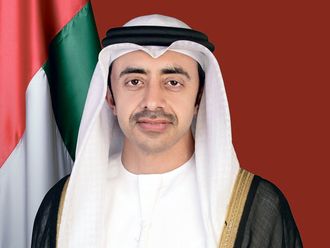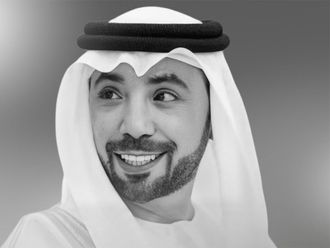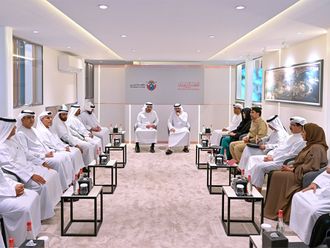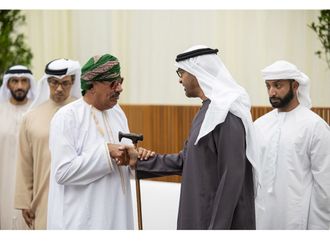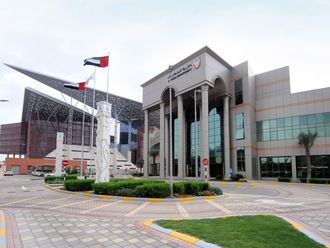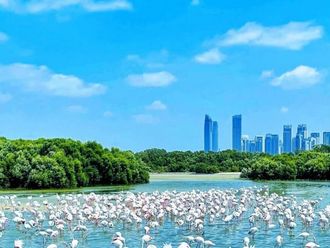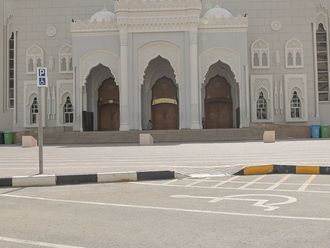Abu Dhabi: The Environment Agency – Abu Dhabi (EAD) has received 40 Arabian Oryx from the USA, which will become part of its long-running Arabian Oryx Breeding Programme under the Arabian Oryx Breeding and Reintroduction Project.
The Oryx, which recently arrived to Abu Dhabi, have been transferred to the Delaika Conservation and Breeding facility managed by EAD.
The newly arrived Oryx — 15 males and 25 females —–will breed with the Oryx that are native to Abu Dhabi and which are currently residing in the Delaika facility. Serving as an extension of its breeding programme, this move is aimed at strengthening the gene pool for the Arabian Oryx in the emirate of Abu Dhabi to produce a more diverse, healthy and resilient population.
The intervention of the late Shaikh Zayed Bin Sultan Al Nahyan, after noticing the drastic decline in the wild Oryx population, played a pivotal role in conserving this species and saving it from extinction. Following in his legacy, the UAE is now home to the largest population of Arabian Oryx in the world. The Arabian Oryx Breeding and Reintroduction Project, which consists of a breeding programme and a release programme, has the endorsement and support of General Shaikh Mohammad Bin Zayed Al Nahyan, Abu Dhabi Crown Prince and Deputy Supreme Commander of the UAE Armed Forces
As a result of EAD’s conservation efforts, Abu Dhabi is proudly home to 3,000 Arabian Oryx today, bringing the total number of Oryx in the UAE to 4,000.
Dr Shaikha Salem Al Dhaheri, Executive Director, Terrestrial and Marine Biodiversity Sector at EAD said: “The Arabian Oryx Breeding and Reintroduction Project is in line with one of our strategic priorities — the preservation of the Emirate’s biodiversity and natural heritage. Today, we are proud that it is considered to be among the world’s most successful conservation stories to date. We will continue working with our regional and international partners to ensure that we honour the legacy of our father, the late Shaikh Zayed, who was passionate about preserving this species.”
Ensuring genetic diversity is critical to ensuring the long term sustainability of any animal population; EAD has brought in these Oryx for breeding as an extra measure to ensure that the species remains sustainable for future generations. There are a variety of threats that any wildlife population can face. Having a small gene pool means that each individual shares many similarities with the rest of the population; therefore, if there were a disease that affected one individual it has the potential to affect many more in within that population. Genetically diverse groups will naturally have better chances of survival.
Dr Al Dhaheri added: “By introducing this new herd into our breeding programme, we will now further safeguard our Arabian Oryx population against the negative impacts of long-term inbreeding. Once the breeding process is successful, we aim to release a number of these Oryx back into the wild.”
The Delaika Conservation and Breeding Facility was established by EAD in 2010 and is located in the Al Khazna area, in the southern part of Abu Dhabi Emirate. The facility covers nearly 3.5 million square metres and is home to 5,000 animals comprising of three species: the Arabian Oryx, Mountain Gazelles, and Sand Gazelles.
EAD has overseen a number of oryx releases in the Emirate, in the year 2007 a total of 98 Arabian Oryx were released into the Arabian Oryx Protected Area in Umm Al Zamool and in 2010, 87 Arabian Oryx were released.
During 2010-2012, the EAD also managed a number of Arabian Oryx releases in Wadi Rum in Jordan by partnering with Al Aqaba Special Economic Zone Authority.


